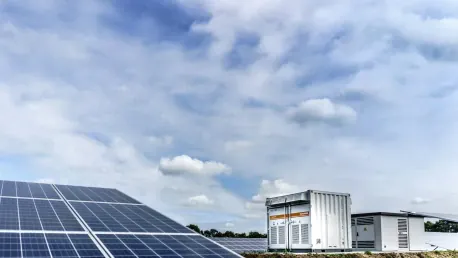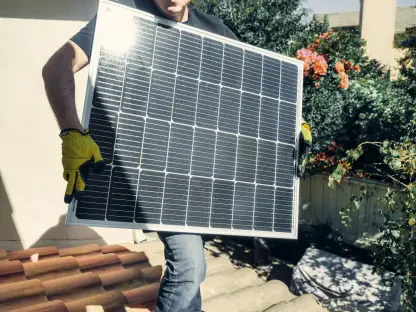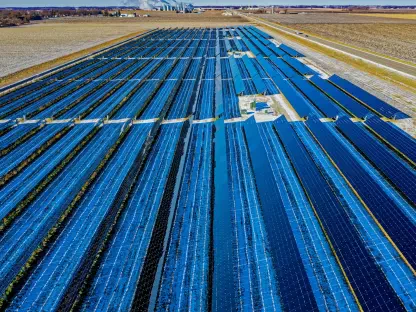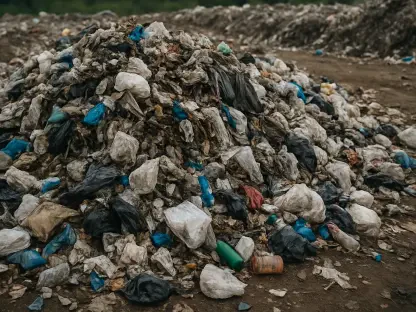New York State has set an ambitious target of achieving 6 GW of energy storage by 2030, doubling its initial goal of 3 GW. This plan, approved by the New York State Public Service Commission (PSC), aims to significantly reduce future statewide electric system costs and improve public health by decreasing reliance on fossil fuel pollutants. The strategy encompasses both retail and residential storage, supported by incentives to ensure participation in the New York Independent System Operator’s (NYISO) distributed energy resources program.
Strategic Implementation Plan
The PSC’s newly approved implementation plan includes deploying 1.5 GW of retail storage and 200 MW of residential storage. By April 1, 2024, New York aims to have 1.3 GW of storage assets either procured or in contract. This comprehensive plan also involves a strategic mix of 1.7 GW of retail and residential storage combined with 3 GW of bulk storage. The New York State Energy Research and Development Authority is set to issue solicitations for bulk storage deployment starting mid-2024.
Currently, New York’s storage capacity stands at 430 MW, with installations ranging from short-duration batteries for ancillary services to long-duration batteries for capacity and reliability requirements. The focus on diverse battery durations reflects ongoing experimentation to optimize their role within the grid. As New York pushes forward with these goals, the challenge will be overcoming deployment barriers and ensuring storage solutions are seamlessly integrated into the existing grid infrastructure.
Challenges and Projections
Despite these measures, a report by Aurora Energy Research suggests that New York might fall short of its 2030 target due to various constraints. However, the report projects that the state could achieve 30 GW of deployed storage by 2050. This analysis indicates a likely surge in deployment towards the late 2020s but also highlights potential obstacles in meeting the precise 2030 target.
Significant attention is given to NYISO’s current interconnection queue, which includes around 60 GW of projects, with nearly 50% being energy storage projects. This underscores the critical role energy storage will play in future energy planning, particularly in the congested grids of New York City and Long Island. These projections call for proactive measures to address systemic and infrastructural challenges, which if not properly handled, could impede progress.
Regulatory and Legislative Goals
The broader legislative goals aim for zero power-sector emissions by 2040, necessitating substantial scaling of energy storage systems. Aurora predicts that by 2040, New York’s grid will require about 30 GW of flexible resources, including battery storage, alongside 17 GW of offshore wind. The development of offshore wind is closely tied to storage needs, with slower wind development potentially increasing reliance on storage to balance renewable energy intermittency.
Regulatory elements, such as adjustments following the Federal Energy Regulatory Commission Order 2023, are also crucial. These adjustments position significant storage capabilities as mature and likely to be realized, with most queued projects targeting the congested grids of New York City and Long Island by 2027-2028. This regulatory framework, combined with supportive policies and incentives, will be paramount in guiding New York towards its energy storage objectives.
Innovative Storage Deployment Strategies
New York State has established an ambitious goal of achieving 6 GW of energy storage by 2030, effectively doubling its original objective of 3 GW. This initiative, sanctioned by the New York State Public Service Commission (PSC), is designed to substantially lower future statewide electric system expenses and enhance public health by decreasing dependence on fossil fuels. The comprehensive plan targets both retail and residential energy storage, fortified by incentives to ensure extensive participation in the New York Independent System Operator’s (NYISO) distributed energy resources program. This approach aims to increase energy efficiency and integrate more renewable energy sources into the grid. Such incentives will encourage businesses and households alike to adopt energy storage technologies, ultimately fostering a more resilient and sustainable energy infrastructure. This strategy aligns with broader efforts to mitigate climate change and transition towards cleaner energy solutions, positioning New York as a leader in sustainable energy advancement.









